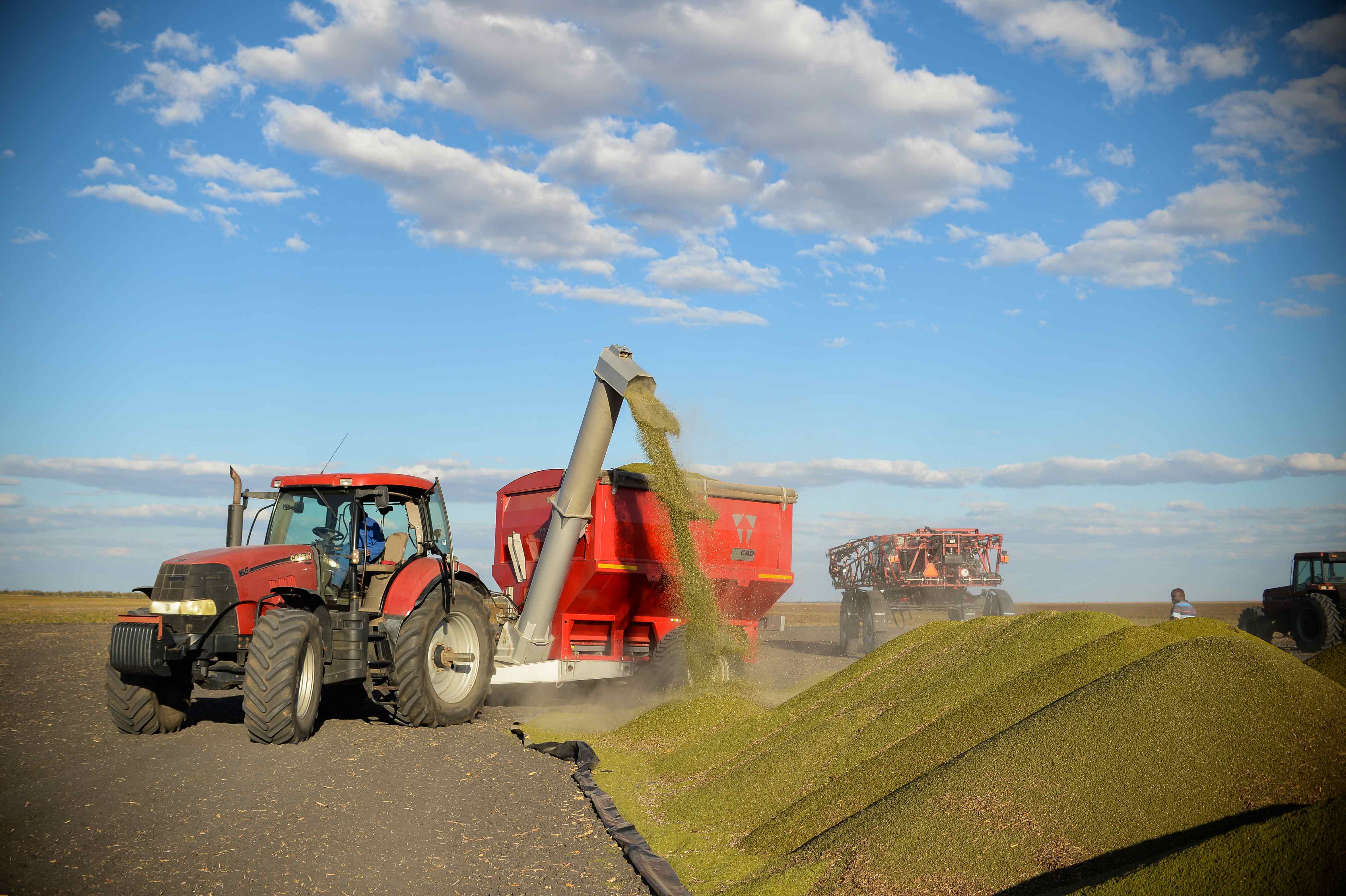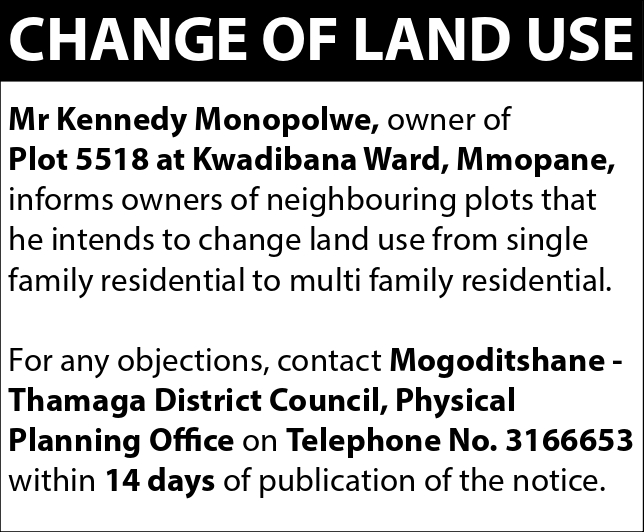- Panda farmers want GMOs
- Decry lack of water for irrigation
- Lack of land in Panda hinders expansion
KEABETSWE NEWEL
While it is illegal for local farmers to produce Genetically Modified Organisms (GMOs), government spends in excess of P100 million annually importing GMO maize from South Africa, money which could be spent on local farmers, if producing GMOs was allowed.
As a result of the Pandamatenga farmers’ production, Botswana is self-sufficient in sorghum production and cowpeas, but still lags behind when it comes to maize production. Domestic demand in maize is at 190 000metric tones ( mt), but local farmers produce around 20 000 mt, which means Botswana imports 160 000 mt of maize annually, mostly from South Africa.
According to Herman Venter , Chairman of the Pandamatenga Farmers Association, the 160 000 mt of maize imported from South Africa is GMO.
“We do not see reasons why laws cannot be amended to allow farmers here to produce GMOs. Should laws be amended, we could as a country be self sufficient in maize production,” he said, adding that unlike sorghum, organic maize needs water, but the climate conditions in Botswana are not favourable for that. In GMOs however, he said, seeds and plants can be biologically modified to favour a specific climatic condition.
Herman is the Managing Director (MD) of Prospects Visions a company that operates a 2000 hector farm. He was speaking to The Botswana Gazette at a media tour of the Pandamatenga farms sponsored by the National Development Bank (NDB). Further, another farmer Carel Viljoen, MD of Eastfort Holdings also believes that GMOs could lead to sustainable food production. Vijoen’s company operates a farm in excess of 2000 hectors. He said producing GMOs is cheaper because it requires less input costs.
Another hindrance to food security according to both Vijoen and Venter, chairman of the association, there is no land to expand their farms in Pandamatenga. “We are waiting to see if government will avail more land, because we want to expand production,” they said.
According to Viljoen, the farmers also want to start irrigating because of drought and limited rainfall. “Through irrigation, we can produce crops on a rotational basis throughout the year and significantly increase our production,” he said, adding that there is no water in Pandamatenga. “Government should connect water here and we will irrigate,” he said. Pandamatenga farmers use water from their owned drilled boreholes. They also use their own solar produced power.
In a previous engagement, Botswana Agricultural Marketing Board (BAMB) Chief Executive Officer (CEO) Leonard Morakaladi said the commercial and even subsistence farmers are facing a very difficult time, which is expected to result in below average produce.
BAMB procures most from the Pandamantenga and the Mosisedi commercial farmers.
During the 2017/2018 harvest year BAMB purchased just 41 107 tonnes of produce from the both the commercial and subsistence farmers. This is despite that Batswana annually consume around 120 000 tonnes of grain. Last year BAMB was forced to supplement the grain by procuring from the neighbouring countries especially South Africa.During the 2017/18 harvest period however, BAMB purchased 28 659 t of sorghum, at the value of P72.9 million from local farmers. It further procured 3 232 t of pulses to the tunes of P28.7 million while white and yellow maize, 5 133 t and 4 082t were procured at the cost of P10.5 million and P8.5 million respectively. In total over 41 107 t of produce was procured at the cost of over P120 million.
It emerged, according to the BAMB CEO, that in Stock holdings, the current stock levels of grains held by the board comprised of 48 000Metrictonnes (Mt) of sorghum, 1500 metric tonnes (Mt) of sorghum , 1500 Mt of white maize ad 2000 Mt of pulses for the Strategic Grain Reserves (SGR). “The current stock levels can sustain the country up to the start of the new harvest in July 2019,” he said.
The 41 107 Mt of produce was even below the 70 000Mt of BAMB’s storage capacity at the SGR.
BAMB, which manages government Strategic Grain Reserves (SGR) can take up a maximum of 70 000 Mt of stock. The stock comprises of 30 000Mt of sorghum, 30 000Mt of maize and 10 000Mt of cowpeas.
Morakaladi revealed that of the current total grain stocks in the SGR, 30 000t is sorghum, 2000t is pulses while maize is at zero for SGR. Morakaladi said it need to be replenished to full capacity at 30 000t or at least at minimum levels of 10 000t urgently. Morakaladi said that while they are waiting for the harvest period of July, all indications are that production will be below par, which will lead to shortage of grain and a hike in prices since demand will be high and competing with limited supply.




